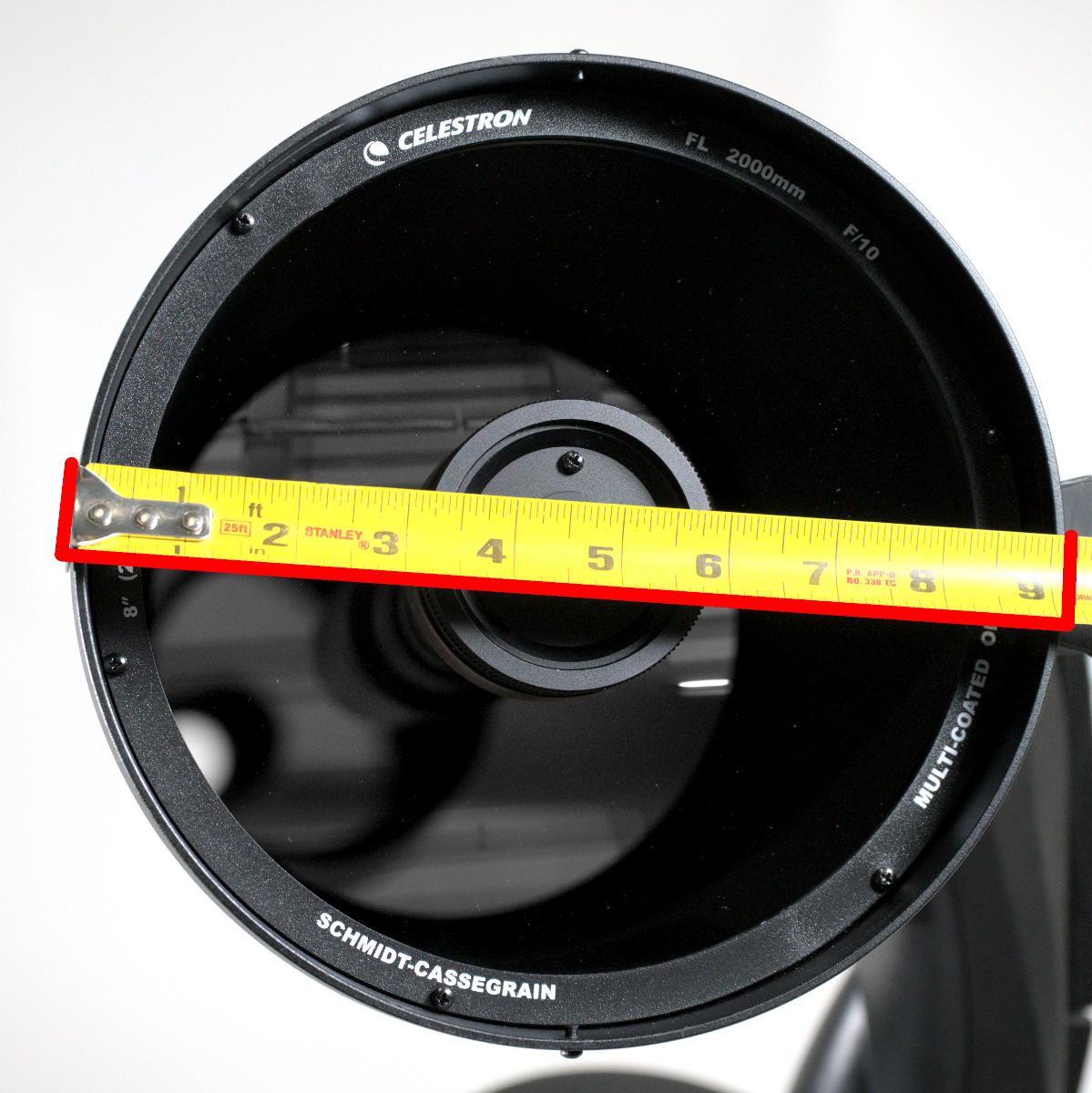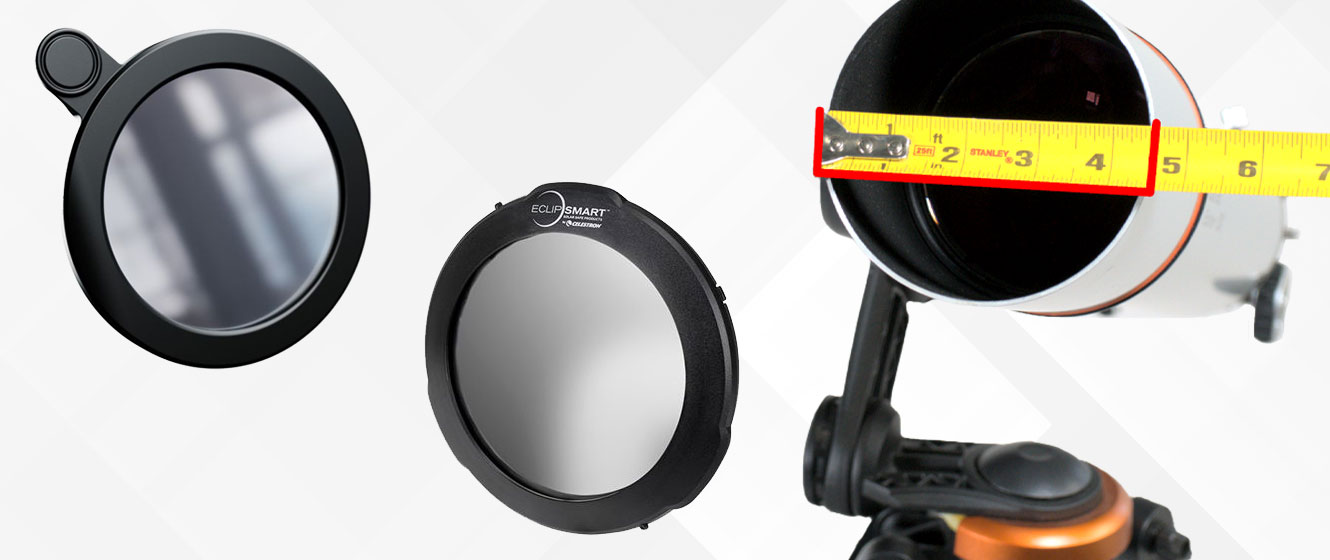
If you’ve ever opened a brand new telescope, or read the manual for one, you’ll likely be familiar with the large stickers, notices, and paragraphs about how you should not point your telescope at the sun. However, just like how you can purchase eclipse glasses to safely view an eclipse, there are solar filters that similarly will allow you to view the sun with your telescope!
These filters work by covering the opening at the front of a telescope with a material that will block enough of the sun’s light to make viewing safe. Most achieve this by attaching the material to a rim or ring that then is adjusted to ‘clamp’ onto the outer rim, tube, or dew shield at the front of the scope. Since telescope designs vary, even amongst scopes of a similar aperture size or type, most filters are designed around an Outer Diameter (or OD).
This ensures that the filter will work with the dimensions of your particular scope, and more importantly, that filter will fit snugly (very important for safety), but does mean that you will need to check the OD of your scope to find the correct model. Luckily that is easy to do, as we’re going to show you today!
Measuring properly and selecting the right solar filter when observing or imaging the sun is crucial. Failure to do so can result in serious damage to your eyes and the optics of your telescope. That's why our experts have created this solar calculator to help make things easier.
Simply input the model of the telescope you plan on using to find out which solar filters will fit properly.
Measuring your scope
- Grab a tape measure, yardstick, ruler, or caliper that can fully fit over the front of your scope.
- Place it over the front of your scope, and select one point along the edge to measure from.
- Keeping one end of your measuring tool at the point you chose, begin to move the other end along the edge directly opposite that point.
- Find the opposite point that corresponds to the greatest distance, and note that measurement.
The points that you’ll want to measure depend on the scope design, but generally you’re looking for the most outside surface. Below are some examples:
For a refractor, measure from here to here. In this example, the OD is 4 9/16".
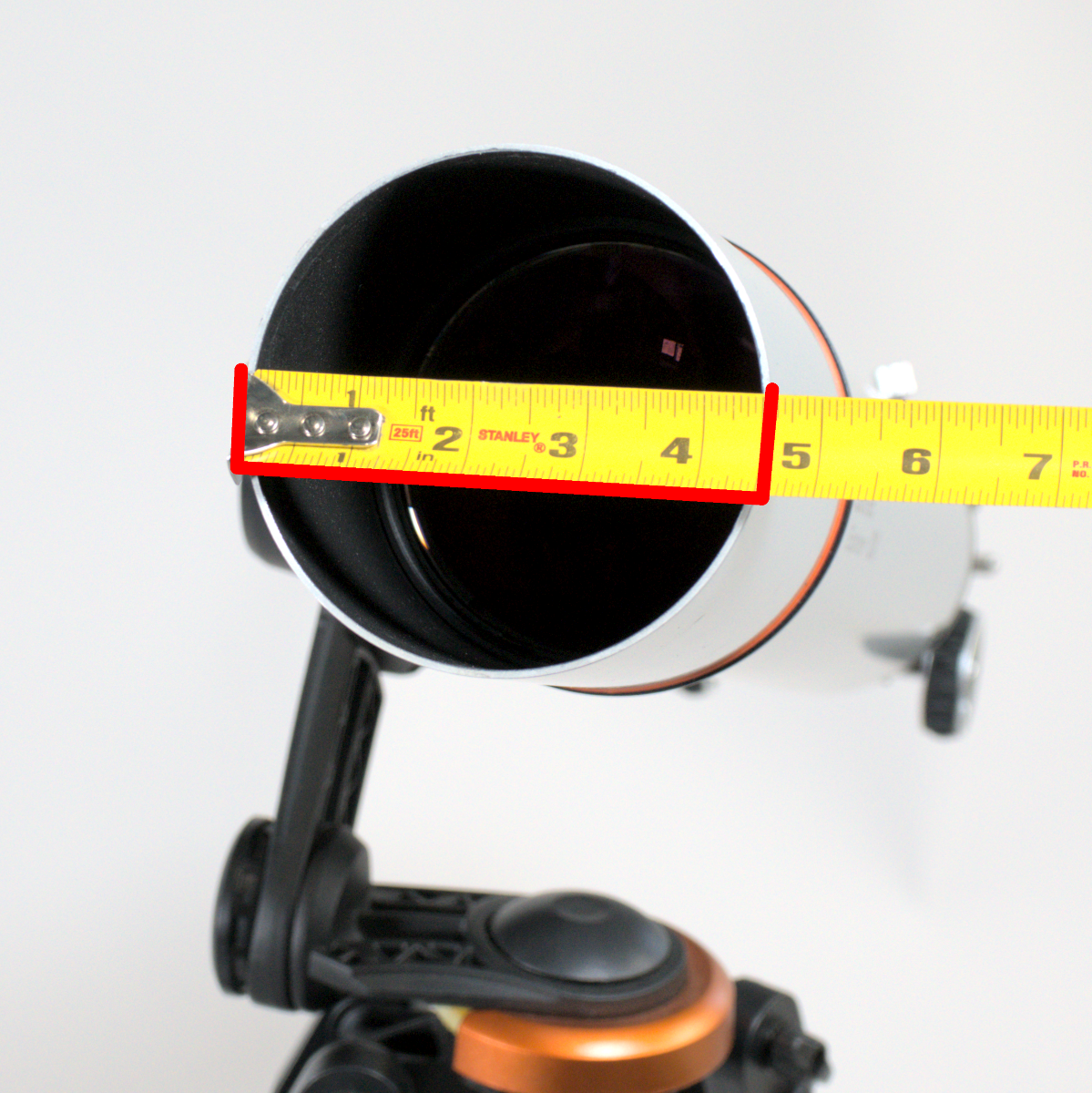 Click to Enlarge Image
Click to Enlarge Image
For a Dobsonian, measure from here to here. In this example, the OD is 9 1/4".
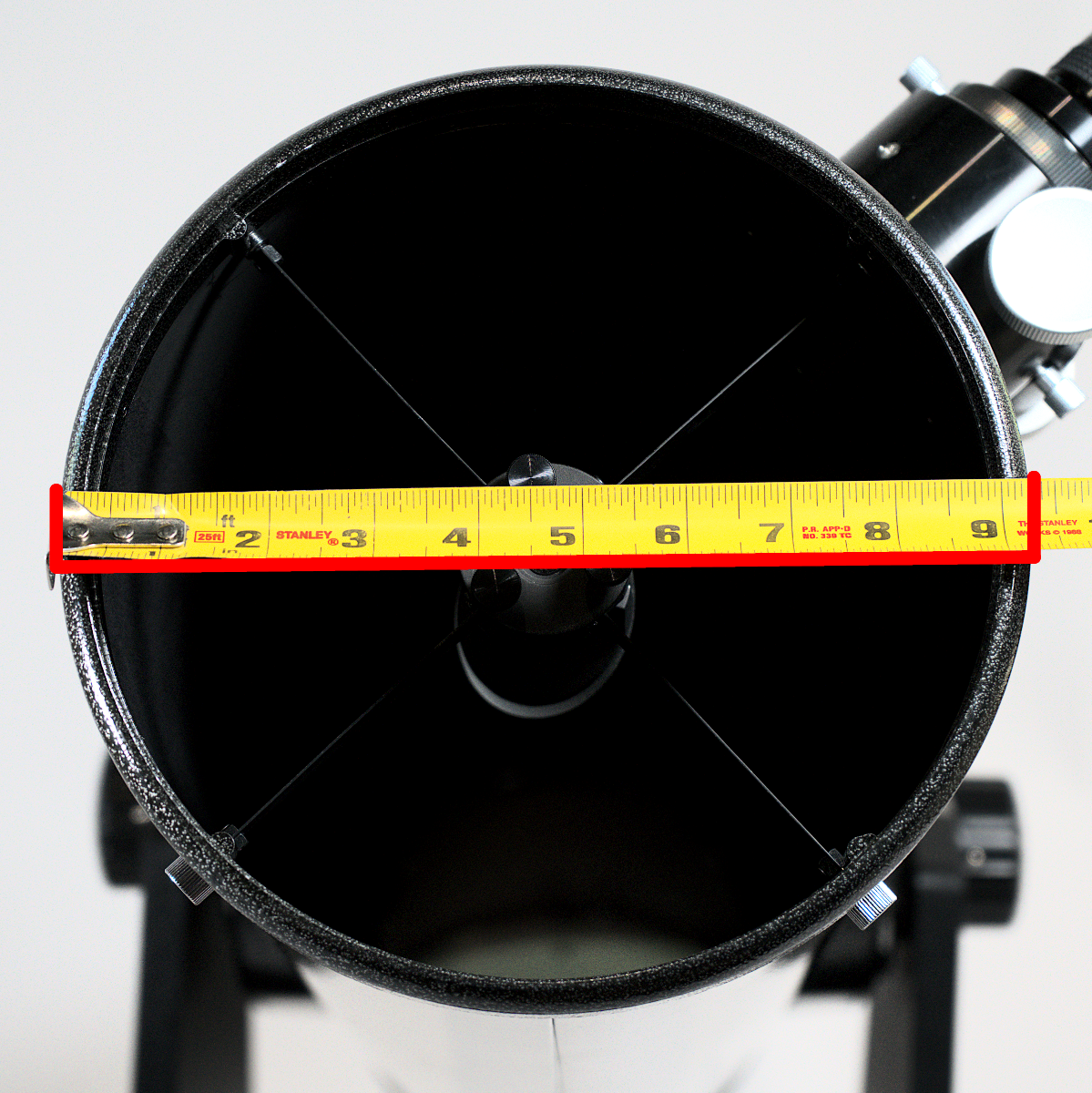 Click to Enlarge Image
Click to Enlarge Image
If you’re using a measuring instrument that is in Imperial units (inches), you’ll want to convert this to millimeters as this is what most all solar filter specs are listed in. An easy way to do this is just by searching for a conversion site, though if you want to do the calculation yourself 1 inch is 25.4 mm (so for example 10 inches would equal 254 mm).
Selecting a solar filter based on your measurements
So now that you’ve measured the OD of your scope, you can go find the solar filter that matches and order that right? Well, not quite. Let’s say you measure 120 mm as your OD, and a manufacturer offers the following sizes - 110 mm to 120 mm, and 120 mm - 130mm - which one do you choose?
In general, the filter you would want to select is the size up (in the example here, the 120 mm - 130 mm option). This will allow the filter to comfortably fit, with the option of adding extra material like self-stick felt if it is a bit too loose; whereas if the filter is a bit too small you don’t have a similar option. When in doubt check the minimum inside and maximum outside diameter specifications, as these will tell you the minimum and maximum sizes the filter can accommodate.
Other considerations
The finder scope: If you are going to use a finder scope, it is just as important to filter these as it is your main telescope. You can select a solar filter for these in the exact same way as we’ve outlined here, however, it should be noted that this is not recommended for something like a reflex finder where it is easy to accidentally look around the filtered window and directly into the sun. If you have this style finder, or don’t want to buy another filter, there are dedicated solar finder scopes you can buy.
Inner tube wall clamping filters: Some filters have the ability to be expanded to press against the inside of a scope’s dew shield or tube. These will typically be listed with an Inner Diameter, or ID, clamping range; and when measuring you would want to measure along the inside edge rather than the outside as shown below:
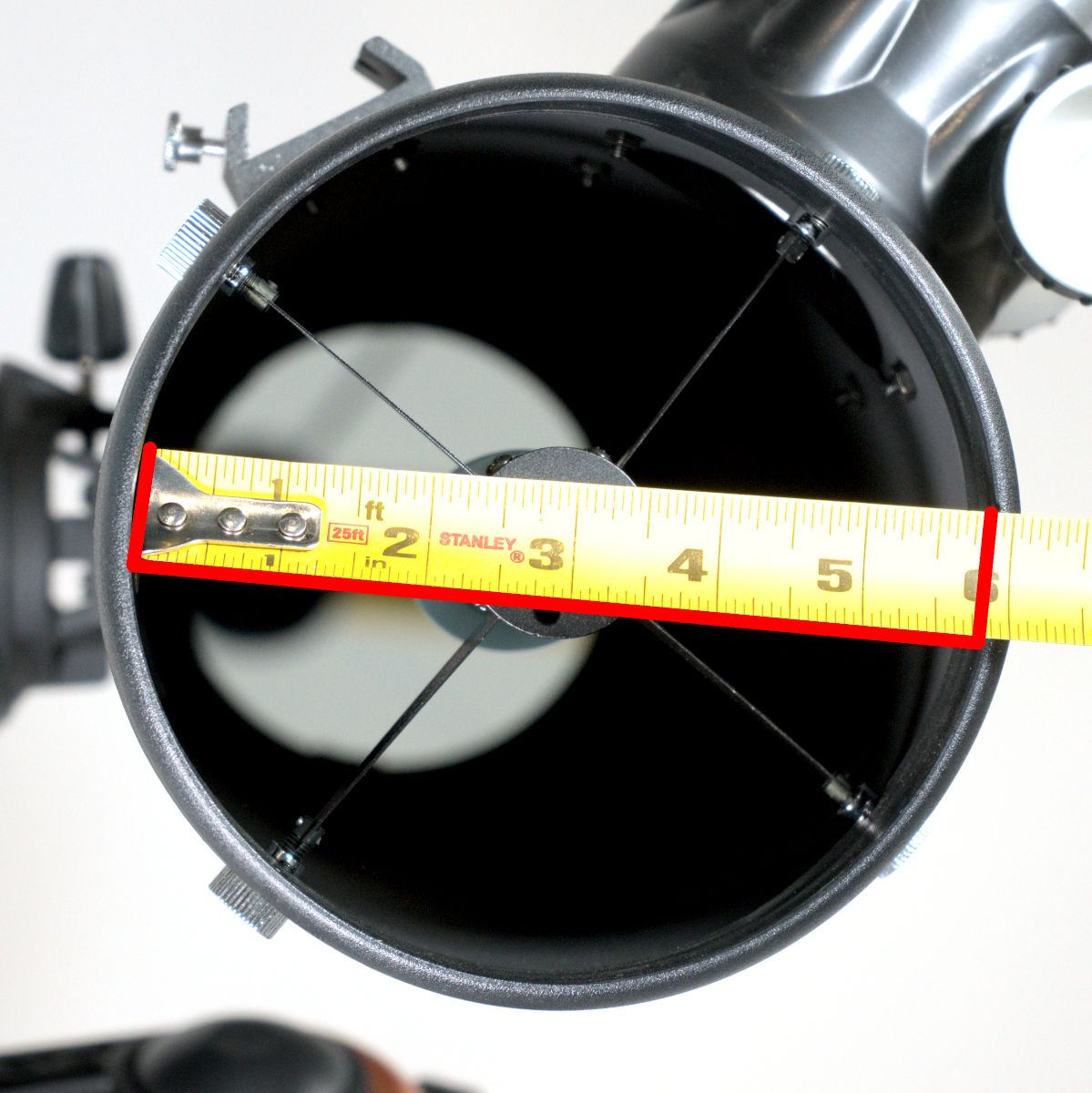 Click to Enlarge Image
Click to Enlarge Image
One note about this style of attachment is that it can only be used with scopes that have enough space inwards for the bolts, such as refractors with longer dew shields and Newtonian/ Dobsonian scopes; these will not fit SCTs.

Learn More
Interested in learning more about how to safely view the sun through your telescope? Not sure where to begin? Check out our Astronomy Hub!




